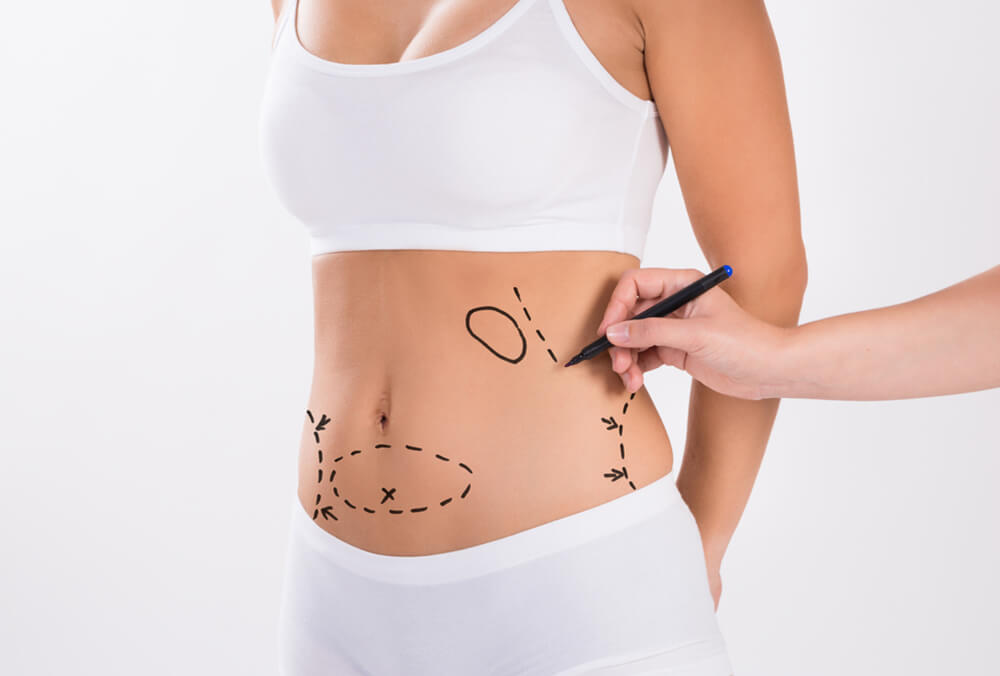Liposuction in Dubai Abu Dhabi UAE is a cosmetic surgical procedure aimed at removing excess fat from specific areas of the body, such as the abdomen, hips, thighs, buttocks, arms, or neck. This technique contours and reshapes areas where fat deposits have resisted diet and exercise.
Importance of Understanding Liposuction Myths and Facts
With the growing popularity of liposuction in Dubai, numerous misconceptions have emerged. It’s crucial to differentiate between myths and facts to make informed decisions about the procedure. Misinformation can lead to unrealistic expectations, disappointment, or even health risks.
Overview of Common Myths vs. Reality
Understanding the truth behind common Best fat removal surgery liposuction myths can help prospective patients set realistic goals and expectations. This article aims to debunk these myths with expert insights and factual information.
What is Liposuction?
Definition and Purpose
Liposuction, also known as lipoplasty or body contouring, is primarily used to remove stubborn fat deposits that do not respond to traditional weight loss methods. It is not a weight loss surgery but a body sculpting procedure.
History of Liposuction
Liposuction has evolved significantly since its inception in the 1970s. Initially, the techniques were rudimentary and associated with high risks. Advances in technology and surgical methods have greatly improved the safety and effectiveness of the procedure.
Types of Liposuction Procedures
There are several types of liposuction, each utilizing different technologies and methods to optimize results.
-
Traditional Liposuction: Involves the use of a cannula and a vacuum device to suction fat from the body.
-
Tumescent Liposuction: A large amount of anesthetic fluid is injected into the fatty tissue before suctioning, which reduces bleeding and pain.
-
Ultrasound-Assisted Liposuction (UAL): Uses ultrasonic waves to liquefy fat before removal, making it easier to extract.
-
Laser-Assisted Liposuction (LAL): Utilizes laser energy to melt fat, which is then suctioned out. This method can also stimulate collagen production, which may improve skin elasticity.
Why Choose a Perfect Doctors Clinic for Liposuction?
Advanced Medical Facilities
Dubai is home to state-of-the-art medical facilities that offer the latest technology and techniques in cosmetic surgery. Hospitals and clinics in Dubai are equipped with cutting-edge equipment, ensuring high standards of care.
Experienced Surgeons
Dubai boasts a pool of highly qualified and experienced cosmetic surgeons. Many of these professionals have international training and are recognized globally for their expertise in liposuction.
Luxury Healthcare Experience
In addition to excellent medical care, Dubai offers a luxurious healthcare experience. Patients can enjoy top-notch service and amenities, making their recovery period more comfortable and pleasant. Viewing before and after photos Liposuction
Common Myths about Liposuction
Liposuction is a Weight Loss Solution
One of the most pervasive myths is that liposuction is a method for losing weight. In reality, liposuction is designed for body contouring, targeting localized fat deposits rather than providing overall weight loss.
Liposuction Results are Permanent
Many believe that once fat is removed, it will never return. While liposuction permanently removes fat cells from the treated area, new fat cells can still form if a patient gains weight.
Liposuction is a Substitute for a Healthy Lifestyle
Liposuction should not be viewed as an alternative to a healthy diet and exercise. It is most effective for individuals who maintain a stable weight and healthy lifestyle but struggle with specific areas of fat.
Liposuction is Extremely Painful
The perception of extreme pain associated with liposuction is outdated. Modern techniques and advancements in anesthesia have significantly reduced the discomfort experienced during and after the procedure.
Liposuction has No Risks or Complications
Like any surgical procedure, liposuction carries risks. These can include infection, blood clots, and adverse reactions to anesthesia. It is crucial to discuss potential complications with a qualified surgeon.
Liposuction is Only for Women
Liposuction is equally effective for men and women. Men often seek liposuction for areas such as the abdomen, chest, and flanks, while women may target the thighs, hips, and arms.
Liposuction Leaves Noticeable Scars
Advances in surgical techniques have minimized scarring. Incisions are typically small and strategically placed to be less visible, and proper post-operative care can further reduce the appearance of scars.
Cost of Liposuction in Dubai
Factors Influencing Cost
The liposuction cost in Dubai varies based on several factors, including the surgeon’s experience, the complexity of the procedure, the number of areas treated, and the facility where the surgery is performed.
Comparing Prices
It’s important to compare prices and understand what is included in the quoted cost. Some clinics may offer all-inclusive packages, while others may charge separately for anaesthesia, facility fees, and post-operative care.
Financing and Insurance Options
While cosmetic procedures like liposuction are typically not covered by insurance, many clinics offer financing options to make the treatment more affordable. Discuss these options with your chosen clinic to find a suitable payment plan.
Facts about Liposuction
Liposuction Targets Fat, Not Weight
Liposuction is specifically designed to remove fat cells from targeted areas. It is not intended as a method for significant weight loss but to improve body contours and proportions.
Maintenance of Liposuction Results
Maintaining liposuction results requires a commitment to a healthy lifestyle. Significant weight gain after the procedure can affect the results and lead to the formation of new fat cells.
Role of Healthy Lifestyle Post-Liposuction
A balanced diet and regular exercise are crucial to sustaining the benefits of liposuction. These practices help prevent new fat accumulation and enhance overall well-being.
Pain Management in Liposuction
Modern pain management techniques, including the use of tumescent anesthesia and post-operative pain relief measures, have made the liposuction experience more comfortable for patients.
Understanding Risks and Complications
While liposuction is generally safe, understanding the potential risks and complications is essential. Discussing these with a certified surgeon can help patients make informed decisions and prepare adequately.
Liposuction for Men and Women
Liposuction is suitable for both men and women looking to improve their body contours. The procedure can address different areas based on gender-specific fat distribution patterns.
Advances in Scar Minimization Techniques
Surgeons use advanced techniques to minimize scarring, including smaller incisions and careful placement in less conspicuous areas. Post-surgery care also plays a role in reducing scar visibility.
Who is a Candidate for Liposuction?
Ideal Candidates
Ideal candidates for liposuction are those who have localized fat deposits that do not respond to diet and exercise, are in good health, and have realistic expectations about the results.
Health Considerations
Candidates must be in good overall health without serious medical conditions that could complicate surgery. A thorough medical evaluation is necessary to determine suitability.
Age Factors
While there is no specific age limit for liposuction, candidates should have good skin elasticity. Younger patients typically have better skin elasticity, which aids in achieving optimal results.
Psychological Readiness
Psychological readiness is crucial. Candidates should have a positive outlook, clear understanding of the procedure, and realistic expectations about the outcomes.
Preoperative Considerations
Consultation with a Surgeon
A comprehensive consultation with a board-certified plastic surgeon is the first step. This includes discussing goals, reviewing medical history, and understanding the procedure in detail.
Medical Evaluations
Preoperative medical evaluations ensure that the patient is fit for surgery. This may include blood tests, imaging studies, and a review of any current medications.
Preoperative Instructions
Patients receive specific instructions to prepare for surgery, such as avoiding certain medications, fasting before the procedure, and arranging for post-operative care.
Setting Realistic Expectations
Setting realistic expectations involves understanding what liposuction can and cannot achieve. It’s important for patients to recognize that the goal is body contouring, not weight loss.
The Liposuction Procedure
Preparation for Surgery
Preparation includes marking the areas to be treated, administering anesthesia, and positioning the patient. The surgical team ensures all equipment is sterile and ready.
Anesthesia Options
Anesthesia options range from local anesthesia with sedation to general anesthesia, depending on the extent of the procedure and patient preference.
The Surgical Process
The surgeon makes small incisions and inserts a cannula to loosen and suction out the fat. The technique used varies based on the type of liposuction being performed.
Duration and Recovery Time
The duration of the surgery varies depending on the extent of fat removal. Recovery time can range from a few days to several weeks, with most patients returning to normal activities within a few weeks.
Postoperative Care
Immediate Post-Surgery Care
Immediate care includes monitoring in a recovery area, managing pain, and ensuring the patient is stable before discharge. Compression garments may be used to reduce swelling.
Long-Term Recovery Tips
Long-term recovery involves following the surgeon’s instructions, attending follow-up appointments, and gradually resuming normal activities. Patients should avoid strenuous exercise until cleared by their surgeon.
Follow-Up Appointments
Regular follow-up appointments are crucial to monitor healing, address any concerns, and ensure optimal results. These appointments allow the surgeon to track progress and make any necessary adjustments.
Managing Complications
If complications arise, such as infection or adverse reactions, prompt medical attention is necessary. Patients should contact their surgeon immediately if they experience unusual symptoms.
Personal Stories or Case Studies
Success Stories
Hearing from individuals who have undergone liposuction can provide valuable insights and inspiration. Success stories highlight the positive outcomes and life-changing effects of the procedure.
Challenges Faced
Understanding challenges and how they were overcome can help prospective patients prepare mentally and physically for the journey. Common challenges include managing expectations and recovery times.
Long-Term Outcomes
Long-term outcomes vary, but many patients report high satisfaction with their results. Maintaining a healthy lifestyle is key to sustaining the benefits of liposuction.
Expert Insights
Quotes from Plastic Surgeons
Experts provide valuable insights into the liposuction process, expectations, and outcomes. Quotes from renowned plastic surgeons can offer clarity and reassurance.
Advice from Medical Professionals
Medical professionals, including dietitians and fitness experts, can offer advice on maintaining results and promoting overall health post-liposuction.
Latest Research Findings
Staying updated with the latest research helps understand new advancements, techniques, and improved safety measures in liposuction.
Conclusion
Liposuction is a valuable tool for body contouring, but it is essential to debunk myths and understand the facts. Proper knowledge leads to informed decisions and realistic expectations. Making informed decisions involves thorough research, consulting with qualified professionals, and understanding both the benefits and risks associated with liposuction.Patients are encouraged to continue learning about liposuction and other cosmetic procedures. Ongoing education helps ensure the best possible outcomes and satisfaction.
FAQs About Liposuction: Myths and Facts Debunked by Experts
1. What is the primary purpose of liposuction?
The primary purpose of liposuction is to contour and reshape specific areas of the body by removing excess fat deposits. It is not intended for weight loss but rather to target stubborn fat that does not respond to diet and exercise.
2. Can liposuction be used as a weight loss method?
No, liposuction is not a weight loss method. It is a body contouring procedure designed to remove localized fat deposits and improve body shape. Significant weight loss should be achieved through diet and exercise or other weight loss surgeries, not liposuction.
3. Are the results of liposuction permanent?
Liposuction results are long-lasting as long as the patient maintains a stable weight and healthy lifestyle. The fat cells removed during liposuction do not regenerate, but weight gain can cause remaining fat cells to expand or new fat cells to form in other areas.
4. Is liposuction only for women?
No, liposuction is not only for women. Men also undergo liposuction to address fat deposits in areas such as the abdomen, chest, and flanks. The procedure is effective for both men and women looking to improve their body contours.
5. How painful is the liposuction procedure?
Modern liposuction techniques and advanced anesthesia options have significantly reduced the pain associated with the procedure. Patients may experience some discomfort and soreness during the recovery period, but this can be managed with prescribed pain medications and proper care.
6. What are the potential risks and complications of liposuction?
Like any surgical procedure, liposuction carries some risks, including infection, blood clots, adverse reactions to anesthesia, and uneven contouring. Discussing these risks with a qualified surgeon and following all pre- and post-operative instructions can help minimize complications.
7. Who is an ideal candidate for liposuction?
Ideal candidates for liposuction are individuals who have localized fat deposits that do not respond to diet and exercise, are in good health, have good skin elasticity, and have realistic expectations about the results. A thorough consultation with a board-certified surgeon is essential to determine suitability.
8. How long is the recovery time after liposuction?
Recovery time after liposuction varies depending on the extent of the procedure and individual healing rates. Most patients can return to normal activities within a few days to a few weeks, but strenuous activities should be avoided for several weeks to ensure proper healing.
9. Will there be visible scars after liposuction?
Liposuction involves small incisions, which typically result in minimal scarring. Surgeons place these incisions strategically to be less noticeable. Proper post-operative care, including following the surgeon’s instructions and using scar treatment products, can further reduce the appearance of scars.
10. How can I maintain the results of liposuction?
Maintaining the results of liposuction requires a commitment to a healthy lifestyle, including a balanced diet and regular exercise. Avoiding significant weight gain is crucial to preserving the improved body contours achieved through the procedure. Regular follow-up appointments with your surgeon can also help monitor and maintain results.




